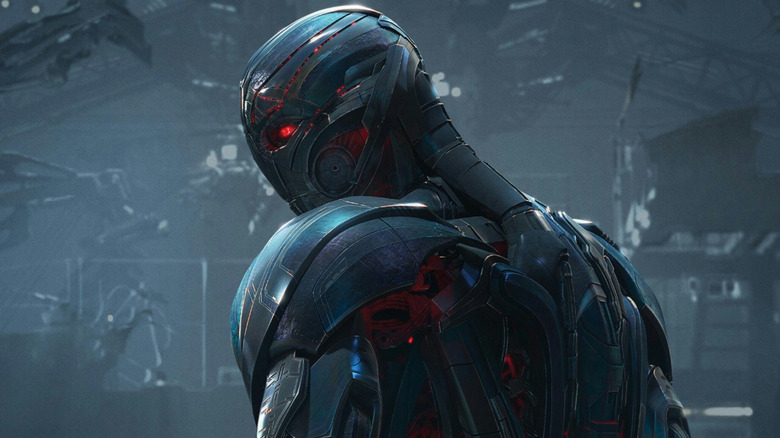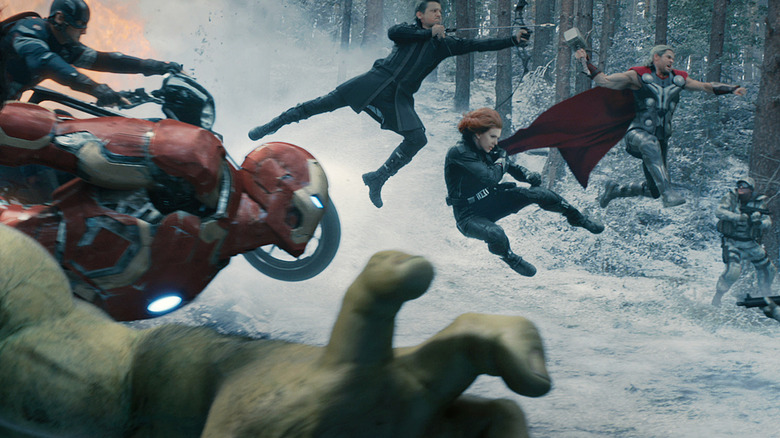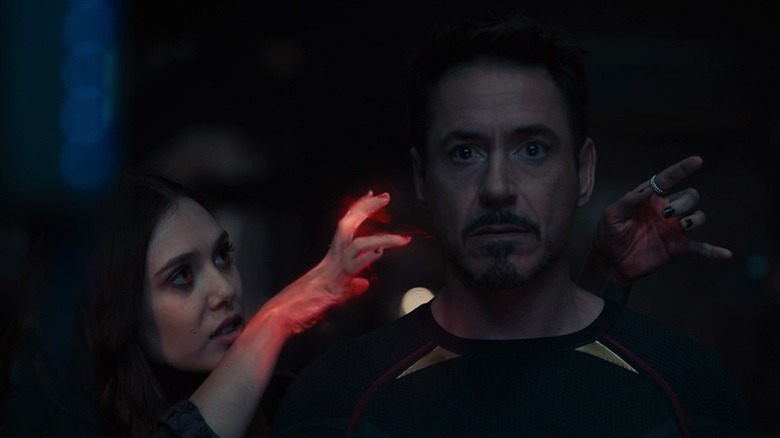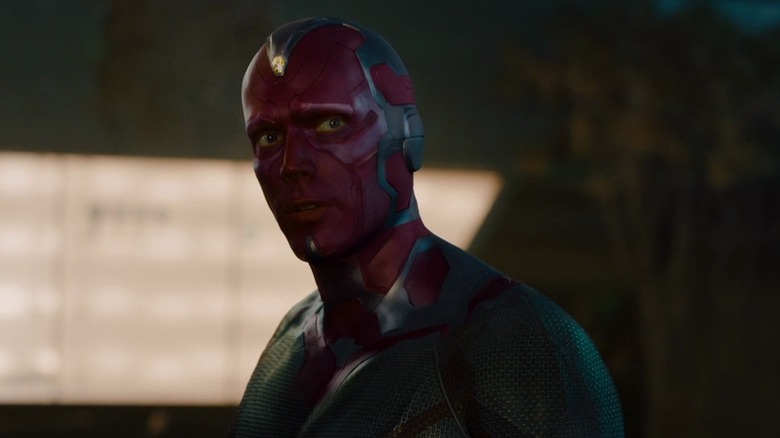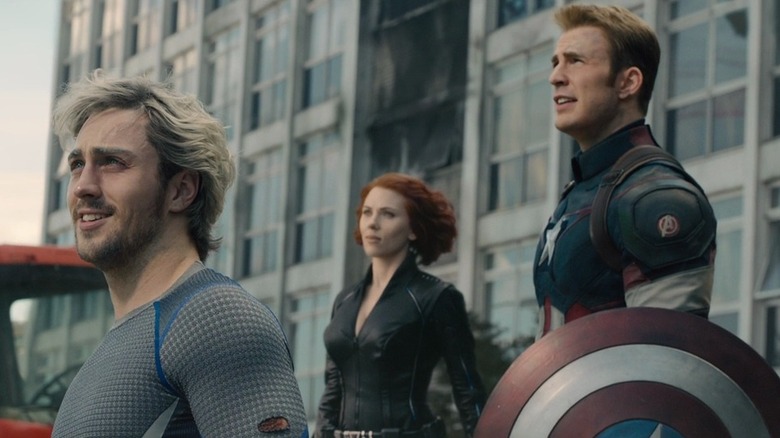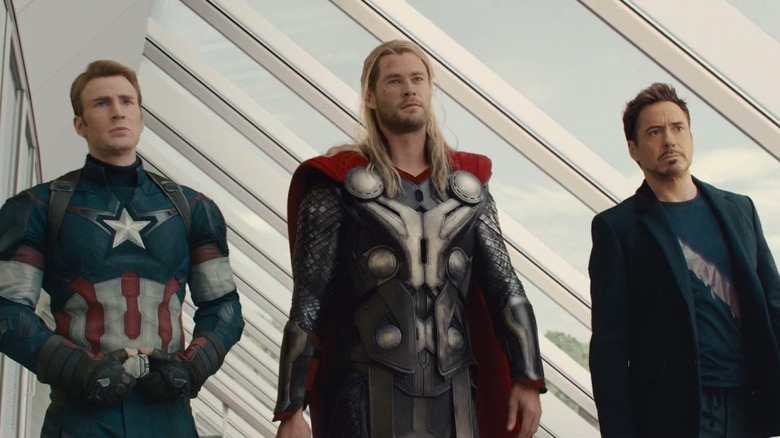Avengers: Age Of Ultron Taught Marvel A Box Office Lesson That Backfired Years Later
(Welcome to Tales from the Box Office, our column that examines box office miracles, disasters, and everything in between, as well as what we can learn from them.)
How do you make something bigger than one of the biggest movies of all time? "By not trying to," Joss Whedon said in 2012 when asked how he could possibly top "The Avengers" with its inevitable sequel. "By being smaller. More personal, more painful. By being the next thing that should happen to these characters and not just a rehash of what seemed to work the first time."
Whedon's "The Avengers" made more than $1.5 billion at the box office globally in 2012, trailing only James Cameron's "Titanic" and "Avatar" on the list of highest-grossing movies ever at the time of its release. The pressure was on for the director to deliver a satisfying follow-up, but, at least initially, he didn't want to fall into the trap of assuming bigger equals better. That didn't exactly pan out.
For better or worse, the much bigger sequel that is "Avengers: Age of Ultron" hit theaters in 2015. It was Marvel's "too big to fail" moment, with the company's cultural powers reaching a fever pitch. It also taught Marvel Studios a dangerous lesson that had major ramifications in the years that followed.
In this week's Tales from the Box Office, we're looking back at "Age of Ultron" in honor of its 10th anniversary. We'll go over how it came to be, how it became bigger than Whedon originally imagined, what happened when it hit theaters, what happened in the aftermath of its release, and what lessons we can learn from it a decade later. Let's dig in, shall we?
The movie: Avengers: Age of Ultron
The film as we know it centers on Tony Stark (Robert Downey Jr.) as he tries to jumpstart a peacekeeping program to keep the Earth safe from threats the Avengers can't handle. Things go south, however, and the Avengers are called to action as the villainous, highly intelligent, self-aware robot Ultron emerges. Superhero shenanigans ensue.
In August 2012, just months after "The Avengers" hit theaters, Marvel put Whedon under an exclusive contract through 2015. That included a sequel to his record-breaking blockbuster, in addition to creating a TV show, which ultimately became "Agents of S.H.I.E.L.D." The deal also called for him to "contribute creatively to the next phase of Marvel's cinematic universe."
Despite Whedon's hopes of making a sequel that didn't have to be bigger, that quickly got away from him. Paul Bettany, who had previously voiced Tony Stark's super-computer system Jarvis, became Vision in the film. Meanwhile, Elizabeth Olsen and Aaron Taylor-Johnson made their proper debut as Scarlet Witch and Quicksilver, respectively, after appearing in the post-credits scene for "Captain America: The Winter Soldier." (This also served as a reunion for the duo, who had only just starred in 2014's "Godzilla" together.) Not to mention, the "Avengers" sequel had to further introduce and set up Ultron, who was played by James Spader ("Boston Legal," "Lincoln").
"The Avengers" had the benefit of using Loki (Tom Hiddleston) as the main villain following his introduction in 2011's "Thor." Here, though, Whedon had to set up everything within the movie itself, as well as peppering in Easter eggs that could help tee up the ball for stuff like "Captain America: Civil War," "Black Panther," and "Thor: Ragnarok," which were to come in the years that followed. It was a lot to manage. The pieces on the board simply didn't lend themselves to "smaller."
Age of Ultron was wildly expensive (even by Marvel standards)
"That has not gone my way. I totes failed to make it smaller. There is a lot of movie," Whedon admitted in a 2015 interview with BuzzFeed. During the shoot, Whedon was having the "best" time. That eventually changed, however, as he explained in the same interview:
"I gotta say, it's been dark. It's been weird. It's been horrible. About a month and a half ago, I said goodbye to my kids, and I've been living in Burbank next to the studio. I feel every day like, I didn't do enough, I didn't do enough, I didn't do enough. I wasn't ready. Here's failure. Here's failure. Here's compromise. Here's compromise."
One area where Marvel Studios, Disney, and Whedon did not compromise? The movie's budget. No superhero film is a cheap undertaking, but "Age of Ultron" literally became one of the most expensive movies of all time with a whopping $365 million budget. Mind you, that was after more than $78 million in tax incentives were factored in, per a study conducted by Film L.A. If we account for inflation? That's a $492 million budget by today's standards.
Robert Downey Jr., Scarlett Johansson, Samuel L. Jackson, Jeremy Renner, Chris Hemsworth, Chris Evans, Mark Ruffalo, and the rest of that massive cast wanted to be paid. Big CGI spectacle like that Hulkbuster armor doesn't come cheap either. At that budget level, which doesn't even account for marketing, Disney and Marvel were essentially banking on this being a $1 billion movie, seeing as theaters keep around half of all money from ticket sales. Even as a sequel to one of the biggest films ever, that's an enormous risk to take.
The financial journey
With "The Avengers," Marvel had done something that had never been done before. With "Age of Ultron," the whole shared universe thing was firmly established, so it wasn't getting any extra points for its team-up concept. The reviews were largely good but not as good as those for its predecessor. At the time, /Film's "Age of Ultron" review labeled it "almost as good as the original." But there wasn't that same effusive buzz, which is key given how things unfolded.
Marvel went all-out for the marketing, complete with a huge showing at San Diego Comic-Con, endless posters, trailers, and an unrivaled media blitz. That also came at a cost, but it appeared to be worth it. "Age of Ultron" opened in theaters on May 1, 2015, debuting to a massive $191.2 million domestically. While it didn't match "The Avengers" ($207.4 million), it still ranks as the 11th biggest opening ever to this day, with its $392.5 million global opening sitting as the seventh-biggest ever. Competition was minimal; "Furious 7" was in its fifth weekend, having already sailed past $1 billion. The coast was clear.
"Ultron" didn't have to surrender the crown until "Tomorrowland," "Pitch Perfect 2," and "Mad Max: Fury Road" all opened on May 15, with "Pitch Perfect 2" ($69.2 million) taking the top spot. By then, it hardly mattered; the narrative had been written, and Marvel had another global smash hit to its name.
Whedon's "Age of Ultron" ultimately finished its run with $459 million domestically to go with $943.8 million internationally for a grand total of $1.4 billion worldwide. It was the fifth-biggest movie ever at that point.
Age of Ultron turned a huge profit despite itself
"Age of Ultron" was a resounding success, to be certain, but it still had to live in the shadow of its predecessor to some degree. In March 2016, Deadline calculated the movie's overall profit at $382 million once TV, VOD and other revenue factored in. However, that was calculated using a $250 million budget, which we'd eventually learn was undercutting it quite a bit. Over the last decade, the film has surely generated quite a bit more profit from Blu-ray sales, merch, and streaming.
Even still, it feels like Marvel got away with one here. No movie — and I do mean no movie — should ever have a budget that big. To that end, even 2019's "Avengers: Endgame" had a budget of around $350 million, and that was a much bigger film in every way. Whedon made a sequel that didn't match his original vision, was not considered to be as good as the first one, and was irresponsibly expensive.
The saving grace turned out to be that, by 2015, audiences were 100% in the bag for the Marvel Cinematic Universe as an ongoing concern. The moviegoing public was not going to miss an "Avengers" movie. Period. It's the same reason "Captain Marvel" sailed to $1.13 billion in 2019 without breaking a sweat. In that way, it taught Marvel Studios that it could do no wrong. That proved to be a perilous lesson, particularly in 2020 and beyond.
Many of Marvel's current problems can be traced back to Age of Ultron
In recent years, Marvel's cultural relevance has started to fade. MCU movies are no longer automatic must-see events just because that "Marvel" title card is there. Just look at "The Marvels," which barely made $200 million worldwide against a massive $220 million budget. In recent years, $200 million budgets are becoming far too commonplace in the industry.
In Marvel's case, the success of outsized blockbusters like "Age of Ultron" made it seem like these regular $200 million investments simply couldn't fail. Well, they're starting to fail more regularly, with the likes of "Ant-Man and the Wasp: Quantumania," "Eternals," and "Captain America: Brave New World" seriously underperforming. The real crowd-pleasers like "Spider-Man: No Way Home" and "Deadpool & Wolverine" still get the job done, but the movies now have to be exceptional to get to that $1 billion mark.
Amazingly, Whedon himself predicted some of the issues Marvel would run into with this whole serialized cinematic universe thing back in 2015 after "Age of Ultron" hit theaters:
"No matter how much they may talk about, 'Well, this is going to lead to some terrible stuff down the line,' in my movie, it's designed to be a complete experience. And if I don't do that, if I haven't brought you on that journey and closed it out, f*** me. That's the danger of this sort of serialized storytelling, turning the motion picture experience into episodic TV. Because we have episodic TV, and now you don't even have to wait to watch it, you can binge it."
The lessons contained within
As the MCU made its way to Disney+ with shows like "WandaVision," it further exacerbated an issue that was building. Marvel was asking for too much attention, and the glut of projects hurt the larger enterprise. Disney CEO Bob Iger even admitted the MCU's Disney+ shows "diluted focus" in 2023, with fewer MCU series airing per year now.
Still, the MCU of 2025 must contend with many, many issues. Its continuity has become unwieldy, budgets continue to present a challenge, and audiences have been worn down by movies that failed to deliver on expectations. In recent years, Marvel Studios has had to accept that it is not too big to fail (at least not anymore). But it was "Age of Ultron" where this notion first seemed to truly take hold. In that way, its success could be viewed, in retrospect, as something of a double-edged sword.
When the MCU's Multiverse Saga ends with 2027's "Avengers: Secret Wars" (which will likely be even more expensive than "Age of Ultron"), Marvel would do well to recalibrate. The studio can no longer afford to budget for presumed success. Those days are gone. Even under the best of times, that's a fool's errand. At worst, it's a fast track to losing lots of money. At best, it needlessly cuts into eventual profits.
If the "Ultron" way of doing things persists, the MCU can fail. It can get too big. The enterprise can doom itself. But it doesn't have to.
